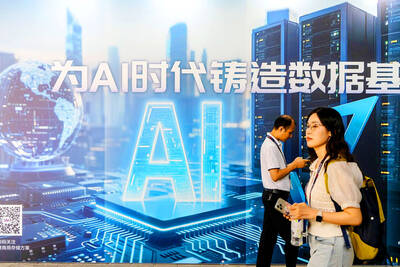Kaohsiung Harbor management vowed yesterday to boost productivity as a report showed that although Kaohsiung retained its title as the world's sixth-busiest container port last year, it is quickly losing its competitiveness.
"We will try to boost our efficiency, cut shipping lines' cost and increase the number of trans-shipment containers," Harbor Master Huang Kuo-ying (
"Our target for 2006 is 10 million TEUs [20-foot equivalent units], and half of them will be trans-shipment containers," he said.
Huang was responding to the Ministry of Transportation and Communication's report which warned that Kaohsiung Harbor was quickly losing its competitiveness because of Taiwan's five-decade ban on sea links with China and the expansion of foreign ports, especially Chinese ports.
Kaohsiung Harbor was the world's third-largest container port in 1999.
The ministry's report is based on the compilation of the world's top-30 container ports last year by the London-based Container International monthly.
According to the March issue, the container volume of all the top-30 ports -- except Kaohsiung -- rose, some by even 20 percent.
But Kaohsiung Harbor's container volume fell by 2.5 percent to 9.47 million TEUs last year, and its gap with Rotterdam Port -- which ranks seventh -- has shrunk from 1.4 million TEUs in 2004 to 180,000 TEUs last year.
According to Containerisation International magazine, Singapore led the world's top-10 container ports last year with 23.19 million TEUs, followed by Hong Kong, Shanghai, Shenzhen and Busan.

Taiwan Semiconductor Manufacturing Co (TSMC, 台積電) last week recorded an increase in the number of shareholders to the highest in almost eight months, despite its share price falling 3.38 percent from the previous week, Taiwan Stock Exchange data released on Saturday showed. As of Friday, TSMC had 1.88 million shareholders, the most since the week of April 25 and an increase of 31,870 from the previous week, the data showed. The number of shareholders jumped despite a drop of NT$50 (US$1.59), or 3.38 percent, in TSMC’s share price from a week earlier to NT$1,430, as investors took profits from their earlier gains

In a high-security Shenzhen laboratory, Chinese scientists have built what Washington has spent years trying to prevent: a prototype of a machine capable of producing the cutting-edge semiconductor chips that power artificial intelligence (AI), smartphones and weapons central to Western military dominance, Reuters has learned. Completed early this year and undergoing testing, the prototype fills nearly an entire factory floor. It was built by a team of former engineers from Dutch semiconductor giant ASML who reverse-engineered the company’s extreme ultraviolet lithography (EUV) machines, according to two people with knowledge of the project. EUV machines sit at the heart of a technological Cold

AI TALENT: No financial details were released about the deal, in which top Groq executives, including its CEO, would join Nvidia to help advance the technology Nvidia Corp has agreed to a licensing deal with artificial intelligence (AI) start-up Groq, furthering its investments in companies connected to the AI boom and gaining the right to add a new type of technology to its products. The world’s largest publicly traded company has paid for the right to use Groq’s technology and is to integrate its chip design into future products. Some of the start-up’s executives are leaving to join Nvidia to help with that effort, the companies said. Groq would continue as an independent company with a new chief executive, it said on Wednesday in a post on its Web

CHINA RIVAL: The chips are positioned to compete with Nvidia’s Hopper and Blackwell products and would enable clusters connecting more than 100,000 chips Moore Threads Technology Co (摩爾線程) introduced a new generation of chips aimed at reducing artificial intelligence (AI) developers’ dependence on Nvidia Corp’s hardware, just weeks after pulling off one of the most successful Chinese initial public offerings (IPOs) in years. “These products will significantly enhance world-class computing speed and capabilities that all developers aspire to,” Moore Threads CEO Zhang Jianzhong (張建中), a former Nvidia executive, said on Saturday at a company event in Beijing. “We hope they can meet the needs of more developers in China so that you no longer need to wait for advanced foreign products.” Chinese chipmakers are in